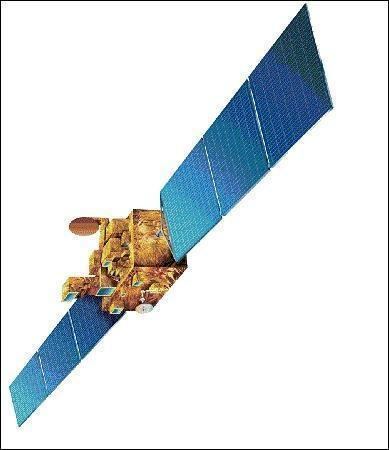Operator ISRO Bus IRS-1 Dimensions 2.8m x 1.98m x 2.57m Inclination 98.28° Period 1.7 hours Launch mass 1,036 kg | Mission duration 11 years, 2 months Manufacturer ISROAntrix Corp Launch date 1999 Inclination 98.28° Launch mass 1,036 kg | |
 | ||
Mission type Earth ObservationRemote Sensing Similar Oceansat‑2, IRS‑1D, IRS‑1C, IRS‑1A, Cartosat‑2A | ||
OceanSat-1 or IRS-P4 is the first Indian satellite built specifically for Ocean applications. It is a part of the Indian Remote Sensing satellite series. The satellite carried Ocean Colour Monitor (OCM) and a Multi-frequency Scanning Microwave Radiometer (MSMR) for oceanographic studies.
Contents
History
Oceansat-1 was launched by ISRO's PSLV-C2 along with German DLR-Tubsat and South Korean KitSat 3 on 26 May 1999 from the First Launch Pad of Satish Dhawan Space Centre in Sriharikota, India. It was the third successful launch of PSLV. It was the 8th satellite of the IRS satellite series of India.
Payloads
Oceansat-1 carried two payloads. The first of these, the Ocean Colour Monitor (OCM), is a solid state camera literally designed primarily to monitor the colour of the ocean, thereby useful for documenting chlorophyll concentration, phytoplankton blooms, atmospheric aerosols and particulate matter. It is capable of detecting eight spectrums ranging from 400 nm to 885 nm, all in the visible or near infrafred spectrums. The second, the Multi-frequency Scanning Microwave Radiometer (MSMR), collects data by measuring microwave radiation passing through the atmosphere over the ocean. This offers information including sea surface temperature, wind speed, cloud water content, and water vapour content.
Mission completed
Although initially launched with a lifespan of 5 years, Oceansat-1 completed its mission on August 8, 2010 after serving for 11 years and 2 months.
